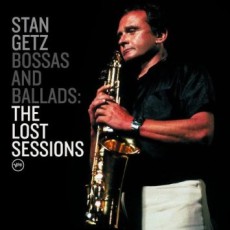
Daily Dose Of Jazz…
Stanley Getz was born on February 2, 1927 in Philadelphia, Pennsylvania but moved to New York City with his parents during The Depression. In school he was a straight A student finishing 6th grade close to the top of his class but his major interest was in musical instruments, and he felt a need to play every instrument in sight.
He played a number of them before his father bought him his first saxophone at the age of 13 and began practicing eight hours a day. Attending James Monroe High School, got accepted in the All City High School Orchestra of New York City, giving him a chance to receive private, free tutoring from the New York Philharmonic’s bassoonist, Simon Kovar.
By 1943 at age 16, he was accepted into Jack Teagarden’s band, becoming his ward because of his age. Getz also played along with Nat King Cole and Lionel Hampton, and after playing for Stan Kenton, Jimmy Dorsey, and Benny Goodman he became the Woody Herman’s soloist for two years in The Second Herd. Known as The Four Brothers alongside Serge Chaloff, Zoot Sims and Herbie Steward, he gained notoriety. Leaving Herman to strike out on his solo career, he led almost all of his recording sessions after 1950. However, it was during this period that having become involved with drugs and alcohol while a teenager, he was arrested in 1954 while attempting to rob a pharmacy to get a morphine fix.
Stan’s reputation was greatly enhanced by his featured status on Johnny Smith’s album Moonlight In Vermont and the single became a hit, staying on the charts for months. He went on to further popularity playing cool jazz with Horace Silver, Smith, Oscar Peterson and others. In his various bands were Roy Haynes, Al Haig, Tommy Potter, Dizzy Gillespie, Herb Ellis, Ray Brown and Max Roach.
In 1961 Getz became a central figure in introducing bossa nova to the American audience, teaming with guitarist Charlie Byrd who had just returned from Brazil. His album Jazz Samba with Charlie Byrd and Antonio Carlos Jobim became a hit, winning him a Grammy for Best Jazz Performance for Desifinado in 1963 that became his first million-copy seller. He would record Big Band Bossa Nova and Jazz Samba Encore! with Luiz Bonfa and get his second gold disc.
He recorded the album Getz/Gilberto with Jobim, Joao Gilberto and Astrud Gilberto winning two more Grammys for The Girl From Ipanema. What could have been a long partnership with his love affair with Astrud Gilberto, moving him away from bossa nova and back to cool jazz. By 1972, he recorded in the fusion idiom with Chick Corea, Tony Williams and Stanley Clarke.
In the mid-1980s he worked regularly in the San Francisco Bay area and taught at Stanford University as an artist-in-residence at the Stanford Jazz Workshop. In 1986, he was inducted into the Down Beat Jazz Hall of Fame. Tenor saxophonist Stan Getz died of liver cancer on June 6, 1991.
More Posts: saxophone
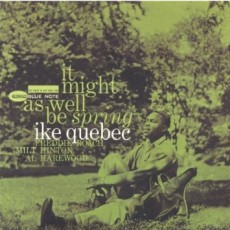
Daily Dose Of Jazz…
Ike Quebec was born Ike Abrams Quebe on August 17, 1918 in Newark, New Jersey and was both an accomplished dancer and pianist. He switched to tenor sax as his primary instrument in his early twenties, and quickly earned a reputation as a promising player. His recording career started in 1940, with the Barons of Rhythm and from 1944 and 1951 he worked intermittently with Cab Calloway.
Over the course of his career Quebec recorded or performed with Frankie Newton, Hot Lips Page, Roy Eldridge, Trummy Young, Ella Fitzgerald, Benny Carter, Sonny Clark, Dodo Green, Jimmy Smith and Coleman Hawkins. He recorded as a leader for Blue Note records in the Forties era, and also served as a talent scout for the label, helping pianists Thelonious Monk and Bud Powell come to wider attention. Due to his exceptional sight-reading skills, he was also an un-credited impromptu arranger for many Blue Note sessions.
His struggles wit drug addiction and the fading popularity of big band music forced Ike to record only sporadically during the 1950s, though he still performed regularly. He kept abreast on new developments in jazz, and his later playing incorporated elements of hard bop, bossa nova and soul jazz. He occasionally recorded on piano, as on his 1961 Blue & Sentimental album, where he alternated between tenor and piano, playing the latter behind Grant Green’s guitar solos.
In 1959 he began what amounted to a comeback with a series of albums on the Blue Note label. Blue Note executive Alfred Lion, though always fond of his music, was unsure how audiences would respond to the saxophonist after a decade of low visibility. So in the mid-to-late 1950s, they issued a series of singles for the juke-box market and audiences ate them up, leading to a number of warmly-received albums. However, his comeback was short-lived when Ike Quebec, the tenor saxophonist with the big breathy sound, passed away from ling cancer on January 16, 1963.
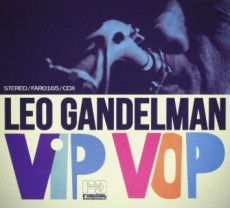
Daily Dose Of Jazz…
Léonardo Gandelman was born Leonardo Gandelman on August 10, 1956, in Rio de Janiero, Brazil. He spent his childhood studying classical music and by age sixteen he was a soloist with the Brazil Symphony Orchestra. He furthered his studies on saxophone, composition and arrangements at Berklee College of Music.
Returning home in 1979 he began his professional career combining Brazilian rhythms and jazz. Eight years later he launched his solo career and to date has participated in over 800 recordings.
Leo has played with Luis Santos, guest appeared in Titas’ single Telecisao and is famous for composing Brazilian telenovelas, films and series soundtracks. He has performed at Lincoln Center and festivals such as Hollywood Rock and the Montreux Festival. The Jornal do Brasil has voted him the most popular instrumental artists 15 consecutive years.
Composer, arranger and saxophonist Leo Gandelman has performed with Caetano Veloso, Chico Buarque, Milton Nascimento, Luiz Melodia, Leny Adrade, Ney Matogrosso, Joel Nascimento and Leila Pinheiro as well as with the Bahia Symphony Orchestra, the Ribeirai Preto Symphony Orchestra and the Young Orchestra of Caracas. He continues to perform, record and tour.
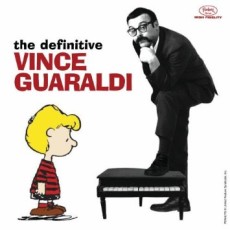
Daily Dose Of Jazz…
Vince Guaraldi was born Vincent Anthony Dellaglio on July 17, 1928 in San Francisco, California. Growing up in the North Beach area, taking the name of his stepfather Tony Guaraldi after being adopted and being around his maternal uncle was a musician, singer and whistle all became an important influence on his blossoming musical career. He attended Lincoln High School, went on to San Francisco State University and then enlisted and served as an Army cook during the Korean War.
His first recording was a self-titled LP recorded in 1953 with the Cal Tjader Trio and released early the following year. By 1955, Guaraldi had his own trio with Eddie Duran and and Dean Reilly. Reuniting with Tjader in 1956 he became an integral part of two bands that the vibraphonist assembled, the first band played mainly straight jazz with Al Torre on drums and Eugene Wright on bass and Luis Kant playing congas and bongos. The second band included Al McKibbon, Mongo Santamaria, Willie Bob, Paul Horn and Jose “Chombo” Silva. He made a big splash with his performance with Tjader at the 1958 Monterey Jazz Festival.
Vince left the group early in 1959 to pursue his own projects full-time. He probably would have remained a well-respected but minor jazz figure had he not written an original number to fill out his covers of Antonio Carlos Jobim/Luis Bonfá tunes on his 1962 album, Jazz Impressions of Black Orpheus. His label, Fantasy Records released the single Samba de Orpheus with his original Cast Your Fate To The Wind on the B-side trying to catch the building bossa nova wave. As providence would have radio DJs began flipping it over and playing the B-side and the gentle, likeable tune stood out from everything else on the airwaves and became a grassroots hit and won the Grammy for Best Original Jazz Composition.
Guaraldi would go on to record with Brazilian guitarist Bola Sete, began experimenting with electric piano and then composed a series of Latin influenced waltz tempos and jazz standards for the Eucharist chorus at the San Francisco Grace Cathedral. Through contact with Peanuts television producer Lee Mendelson, he was commissioned to score the upcoming Christmas special and played what would become Linus and Lucy over the phone two weeks later. The Vince Guaraldi Trio with drummer Jerry Granelli and bassist Fred Marshall recorded the soundtrack and he would go on to compose scores for seventeen Peanuts television specials, plus the feature film A Boy Called Charlie Brown.
Pianist and composer Vince Guaraldi passed away at age 47 on February 6, 1976. The evening before, he had dined at Peanuts producer Lee Mendelson’s home and was reportedly not feeling well, complaining of indigestion-like chest discomfort that his doctor had told him was nothing to worry about. The following evening, after concluding the first set at Butterfield’s Nightclub in Menlo Park, California with his interpretation of the Beatles’ Eleanor Rigby, Guaraldi and drummer Jim Zimmerman returned to the room they were staying in that weekend at the adjacent Red Cottage Inn, to relax before the next set. Walking across the room he just collapsed. That was it. The cause of death has been variously described as a heart attack or an aortic aneurysm. He had just finished recording the soundtrack for It’s Arbor Day, Charlie Brown earlier that afternoon. He left us a modest catalogue of some 32 albums as a leader or co-leader, 14 notable appearances as a sideman and another eleven showcasing or featuring his music.
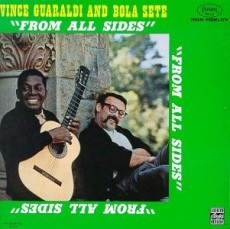
Daily Dose Of jazz…
Bola Sete was born Djalma de Andrade on July 16, 1923 in Rio de Janiero, Brazil. His name translates to Seven Ball and in Brazilian billiards the seven ball is the black ball on the table. He got this nickname when he was the only black member of a small jazz group. He studied guitar at the Conservatory of Rio and started performing with his own sextet and local samba groups while he was still a student. His early influences were guitarists Django Reinhardt, Charlie Christian, Barney Kessell and Oscar Moore, as well as the big band sounds of Dizzy Gillespie, Tommy Dorsey and Woody Herman that toured South America.
His career began in 1952 playing various clubs and hotels around Italy for four years. Then returning to Brazil while touring South America he was spotted by the manager of the Sheraton hotels who brought him to the States to play in New York’s Park Sheraton and San Francisco’s Sheraton Palace. Dizzy Gillespie was staying there at the time and listening to Bola Sete playing every day. When Gillespie decided to bring his pianist Lalo Schifrin to the hotel, he discovered that Lalo and Bola had already met and played together in Argentina. This meeting was the beginning of Bola’s success in the US. In the fall of 1962, Gillespie took the guitarist to the 9th Annual Monterey Jazz Festival. Enjoying huge success he toured for a while with Gillespie then returned to San Francisco and joined the Vince Guaraldi Trio.
Bola was already well known in the US, and his partnership with Guaraldi yielded several well-received recordings. After staying for a couple of years Bola formed his own trio with his fellow Brazilians, bassist Sebastian Neto and drummer Paulinho da Costa. In the 1970s, he became friends with guitarist John Fahey, who had been an admirer of Sete’s. In 1975, Fahey used his Takoma label to release Ocean, which is now seen as one of Sete’s greatest accomplishments.
During the eighties, Sete suffered from lung cancer and though he attempted to counter with yoga and meditation, on February 14, 1987 guitarist Bola Sete passed away at Marin General Hospital in Greenbrae, California from complications caused by pneumonia and cancer.
More Posts: guitar


